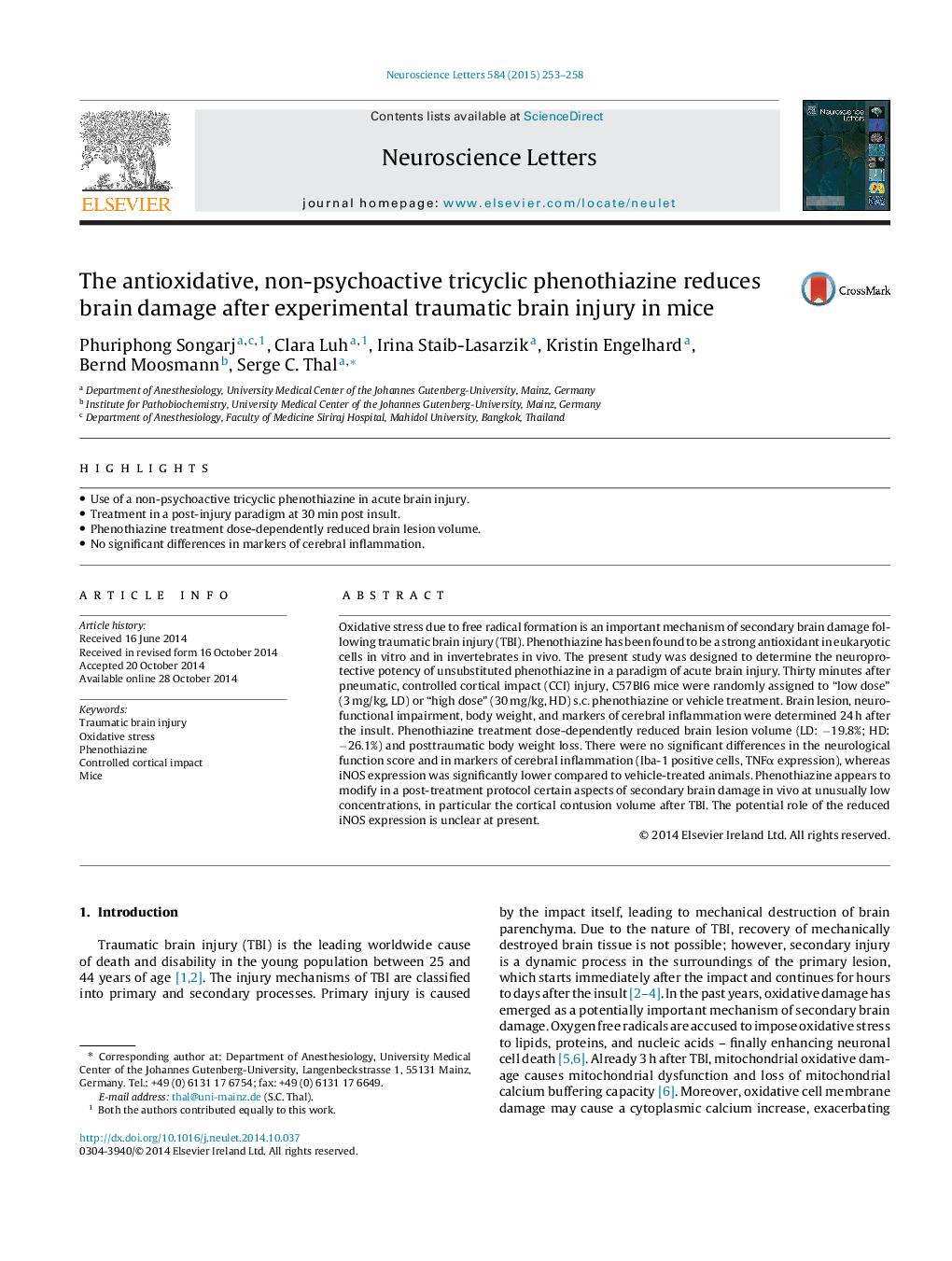| کد مقاله | کد نشریه | سال انتشار | مقاله انگلیسی | نسخه تمام متن |
|---|---|---|---|---|
| 6281484 | 1615115 | 2015 | 6 صفحه PDF | دانلود رایگان |
عنوان انگلیسی مقاله ISI
The antioxidative, non-psychoactive tricyclic phenothiazine reduces brain damage after experimental traumatic brain injury in mice
ترجمه فارسی عنوان
آنتی اکسیدان و فنوتیازین سه حلقه ای غیر روانگردان پس از آسیب مغزی آسیب مغزی در موش باعث کاهش آسیب مغزی می شود
دانلود مقاله + سفارش ترجمه
دانلود مقاله ISI انگلیسی
رایگان برای ایرانیان
کلمات کلیدی
آسیب تروماتیک مغز، استرس اکسیداتیو، فنوتیازین، کنترل ضربه خورده، موش،
موضوعات مرتبط
علوم زیستی و بیوفناوری
علم عصب شناسی
علوم اعصاب (عمومی)
چکیده انگلیسی
Oxidative stress due to free radical formation is an important mechanism of secondary brain damage following traumatic brain injury (TBI). Phenothiazine has been found to be a strong antioxidant in eukaryotic cells in vitro and in invertebrates in vivo. The present study was designed to determine the neuroprotective potency of unsubstituted phenothiazine in a paradigm of acute brain injury. Thirty minutes after pneumatic, controlled cortical impact (CCI) injury, C57BI6 mice were randomly assigned to “low dose” (3 mg/kg, LD) or “high dose” (30 mg/kg, HD) s.c. phenothiazine or vehicle treatment. Brain lesion, neurofunctional impairment, body weight, and markers of cerebral inflammation were determined 24 h after the insult. Phenothiazine treatment dose-dependently reduced brain lesion volume (LD: â19.8%; HD: â26.1%) and posttraumatic body weight loss. There were no significant differences in the neurological function score and in markers of cerebral inflammation (Iba-1 positive cells, TNFα expression), whereas iNOS expression was significantly lower compared to vehicle-treated animals. Phenothiazine appears to modify in a post-treatment protocol certain aspects of secondary brain damage in vivo at unusually low concentrations, in particular the cortical contusion volume after TBI. The potential role of the reduced iNOS expression is unclear at present.
ناشر
Database: Elsevier - ScienceDirect (ساینس دایرکت)
Journal: Neuroscience Letters - Volume 584, 1 January 2015, Pages 253-258
Journal: Neuroscience Letters - Volume 584, 1 January 2015, Pages 253-258
نویسندگان
Phuriphong Songarj, Clara Luh, Irina Staib-Lasarzik, Kristin Engelhard, Bernd Moosmann, Serge C. Thal,
